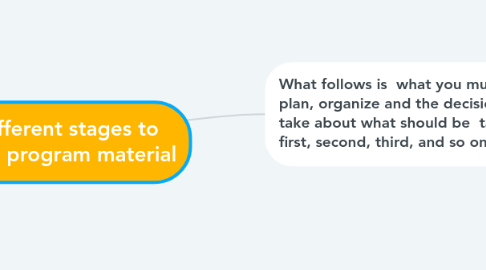
1. What follows is what you must plan, organize and the decisions to take about what should be taught first, second, third, and so on
1.1. Structural
1.1.1. Grammatical and phonological structures
1.2. Situational
1.2.1. Situations form the organizing principlesequenced by the likelihood students will encounter them
1.3. Topical
1.3.1. Topics or themes
1.4. Functional
1.4.1. Functions
1.5. Notional
1.5.1. Conceptual categories called notions
1.6. Skills
1.6.1. Skills serve as the basis for organization sequenced by some sense of chronology or usefulness for each skill
1.7. Task
1.7.1. Task or activity-based categories
1.8. Selecting the Shape of the Syllabus
1.8.1. The Linear Format
1.8.1.1. Is adopted for discrete element content, particularly grammar or structures.
1.8.2. The Modular Format
1.8.2.1. Is well suited to courses which integrate thematic or situational contents
1.8.3. The Cyclical Format
1.8.3.1. Is an organizational principle which enables teachers and learners to work with the same topic more than once
1.8.4. The Matrix Format
1.8.4.1. Is well suited to situational content.
1.8.5. The story-line format
1.8.5.1. Is basically a narrative
1.9. Organizing the course
1.9.1. Five Aspects of Organizing a Course
1.9.1.1. Determining the organizing principle(s)
1.9.1.1.1. Identifying the course units based on the organizing principle(s)
1.10. Language Testing
1.10.1. “Tests can be used to drive a programme by shaping the expectations of the students and their teachers” (Brown, 1995: 22)
1.11. Materials
1.11.1. Important aspect of materials development is making choices and that you need to make these choices based on what you want your students to learn according to your goals and objectives and your syllabus focus
